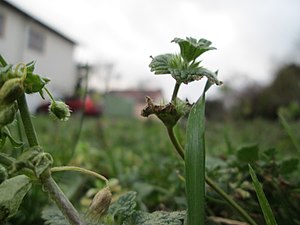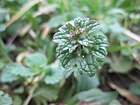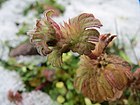Note: This is a project under development. The articles on this wiki are just being initiated and broadly incomplete. You can Help creating new pages.
Difference between revisions of "Laminum amplexicaule"
| Line 2: | Line 2: | ||
'''Lamium amplexicaule''' is an annual plant that can grow up to 0.25 metres tall. It is harvested from the wild for local use as a food and medicine | '''Lamium amplexicaule''' is an annual plant that can grow up to 0.25 metres tall. It is harvested from the wild for local use as a food and medicine | ||
==Uses== | ==Uses== | ||
| − | + | {{Uses|}}, {{Uses|}}.<ref name="Uses"/> | |
==Parts Used== | ==Parts Used== | ||
Latest revision as of 16:54, 29 May 2020
Lamium amplexicaule is an annual plant that can grow up to 0.25 metres tall. It is harvested from the wild for local use as a food and medicine
Contents
- 1 Uses
- 2 Parts Used
- 3 Chemical Composition
- 4 Common names
- 5 Properties
- 6 Habit
- 7 Identification
- 8 List of Ayurvedic medicine in which the herb is used
- 9 Where to get the saplings
- 10 Mode of Propagation
- 11 How to plant/cultivate
- 12 Commonly seen growing in areas
- 13 Photo Gallery
- 14 References
- 15 External Links
Uses
[[:Category:Ayurvedic Herbs known to be helpful to treat |]], [[:Category:Ayurvedic Herbs known to be helpful to treat |]].[1]
Parts Used
Chemical Composition
Common names
| Language | Common name |
|---|---|
| Kannada | |
| Hindi | |
| Malayalam | |
| Tamil | |
| Telugu | |
| Marathi | |
| Gujarathi | |
| Punjabi | |
| Kashmiri | |
| Sanskrit | |
| English |
Properties
Reference: Dravya - Substance, Rasa - Taste, Guna - Qualities, Veerya - Potency, Vipaka - Post-digesion effect, Karma - Pharmacological activity, Prabhava - Therepeutics.
Dravya
Rasa
Guna
Veerya
Vipaka
Karma
Prabhava
Habit
Identification
Leaf
| Kind | Shape | Feature |
|---|---|---|
Flower
| Type | Size | Color and composition | Stamen | More information |
|---|---|---|---|---|
| {{{5}}} |
Fruit
| Type | Size | Mass | Appearance | Seeds | More information |
|---|---|---|---|---|---|
Other features
List of Ayurvedic medicine in which the herb is used
Where to get the saplings
Mode of Propagation
How to plant/cultivate
Tolerates most soils and conditions. Prefers a light dry soil.[4]
Commonly seen growing in areas
Cultivated soil, Usually on light dry soils.
Photo Gallery
References
- ↑ Indian Medicinal Plants by C.P.Khare
- ↑ [Chemistry]
- ↑ [Morphology]
- ↑ Cultivation
External Links
Categories:
- Ayurvedic Herbs known to be helpful to treat
- Herbs with Young leaves used in medicine
- Habit - Annual
- Index of Plants which can be propagated by Seeds
- Herbs that are commonly seen in the region of Cultivated soil
- Herbs that are commonly seen in the region of Usually on light dry soils
- Herbs
- Pages without herbs images





